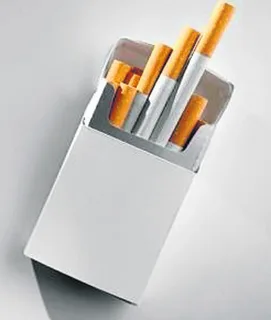When it comes to buying cigarettes, one of the most frequently asked questions is: How many cigarettes are in a pack? Whether you’re a regular smoker or new to smoking, understanding the standard number of cigarettes in a pack is essential for making informed purchases. In this guide, we’ll provide an overview of how many cigarettes in a pack, and answer some other common questions like how many cigarettes are in a carton, how many packs are in a carton, and more.
The Standard Number of Cigarettes in a Pack
Most standard cigarette packs contain 20 cigarettes. This has been the norm for many years across the globe, especially in countries like the United States, the United Kingdom, and most European nations. The number 20 is a standard that has been adopted by tobacco companies for easy packaging and selling.
However, while 20 cigarettes is the most common number, it’s not universal. Some countries or certain brands may sell packs with a different number of cigarettes. For example:
- 10-cigarette packs: These smaller packs are often sold for convenience, offering a more affordable or smaller option for smokers.
- 25-cigarette packs: Occasionally, you may find packs that contain 25 cigarettes, though these are less common.
So, when purchasing cigarettes, it’s always best to check the packaging for the exact number of cigarettes per pack. However, 20 remains the standard for most brands.
How Many Cigarettes Are in a Carton?
Now that you know how many cigarettes are typically in a pack, you may wonder about cartons. A carton of cigarettes typically contains 10 packs, or 200 cigarettes in total. Cartons are often sold at a discounted price compared to buying individual packs, making them a popular choice for smokers who buy in bulk.
The number of cigarettes in a carton can vary depending on the country or brand, but the most common standard is 200 cigarettes (10 packs of 20).
How Many Cigarette Packs Are in a Carton?
As mentioned earlier, a typical carton of cigarettes contains 10 packs, which equates to 200 cigarettes. The carton serves as a convenient bulk option for smokers who want to buy in larger quantities. It’s also a more economical choice, as purchasing a carton of cigarettes usually offers a better price per pack compared to buying individual packs.
In some cases, a carton may contain more or fewer packs depending on the region and brand. For example, in some countries, cartons may contain 8 or 12 packs. However, the 10-pack standard remains the most prevalent.
How Many Cigs in a Pack?
When people ask, “How many cigs in a pack?” They are essentially referring to the number of individual cigarettes in a standard pack. As mentioned earlier, the most common pack size contains 20 cigarettes. This makes it easy for smokers to know exactly how many cigarettes they can expect in a typical purchase.
While the standard pack size is 20, you may also encounter different pack sizes, as we’ve seen with the 10-cigarette packs and 25-cigarette packs. These smaller or larger options may be priced differently, offering smokers more flexibility depending on their needs.
How Many Cigarettes Are in a Box?
Some cigarette brands sell their products in boxes instead of traditional packs. These cigarette boxes often contain more than one pack. For instance, a box may hold two or more packs of cigarettes, which could result in anywhere from 40 to 60 cigarettes in total, depending on the packaging.
While these cigarette boxes are less common than standard packs or cartons, they may be a preferred option for smokers looking for a larger supply of cigarettes at once. Similar to cartons, cigarette boxes may offer a discount when purchased in bulk.
The Evolution of Cigarette Packaging
The way cigarettes are packaged has evolved over the years. Originally, cigarettes were sold in smaller quantities, but as smoking became more widespread, larger packs and cartons became the norm. Today, cigarette packs are carefully designed with branding, health warnings, and legal regulations, all of which impact their size and packaging.
Tobacco companies often make changes to their packaging based on local laws and market demand. Some countries even impose restrictions on pack sizes or mandate specific packaging for health warnings. Regardless of the design or packaging type, the quantity of cigarettes in a pack, carton, or box remains consistent within the global standards.
Why Does the Number of Cigarettes in a Pack Matter?
Understanding the number of cigarettes in a pack is important for both health and financial reasons. For example:
Health Considerations
The more cigarettes you buy at once, the higher the risk of smoking-related health issues. Keeping track of how many cigarettes you consume can help you monitor your smoking habits and make healthier choices.
Cost-Effective Purchasing
If you’re looking to save money, buying in bulk—such as purchasing cartons instead of individual packs—can lower the overall cost per cigarette. However, it’s essential to consider the health risks associated with packaging boxes and weigh the cost savings against the long-term effects of smoking.
Convenience
Some smokers prefer the convenience of having a larger supply of cigarettes on hand, especially if they are buying in bulk. Whether it’s a pack, a box, or a carton, having a ready supply can save trips to the store.
Conclusion
When it comes to how many cigarettes in a pack, the most common answer is 20 cigarettes. However, depending on the brand, region, and packaging preferences, you may encounter smaller or larger packs. If you’re purchasing in bulk, a carton typically contains 10 packs, or 200 cigarettes in total. Additionally, cigarette boxes may offer larger quantities, depending on the packaging.
Whether you’re buying a single pack or a full carton, it’s important to be aware of the quantity you’re purchasing and the health risks associated with smoking. Understanding cigarette packaging can help you make informed decisions when shopping for your preferred brand.
By keeping these details in mind, you’ll have a better understanding of how many cigarettes are in a pack, a carton, or a box, allowing you to make smarter and more economical choices.



Leave a comment
Your email address will not be published. Required fields are marked *